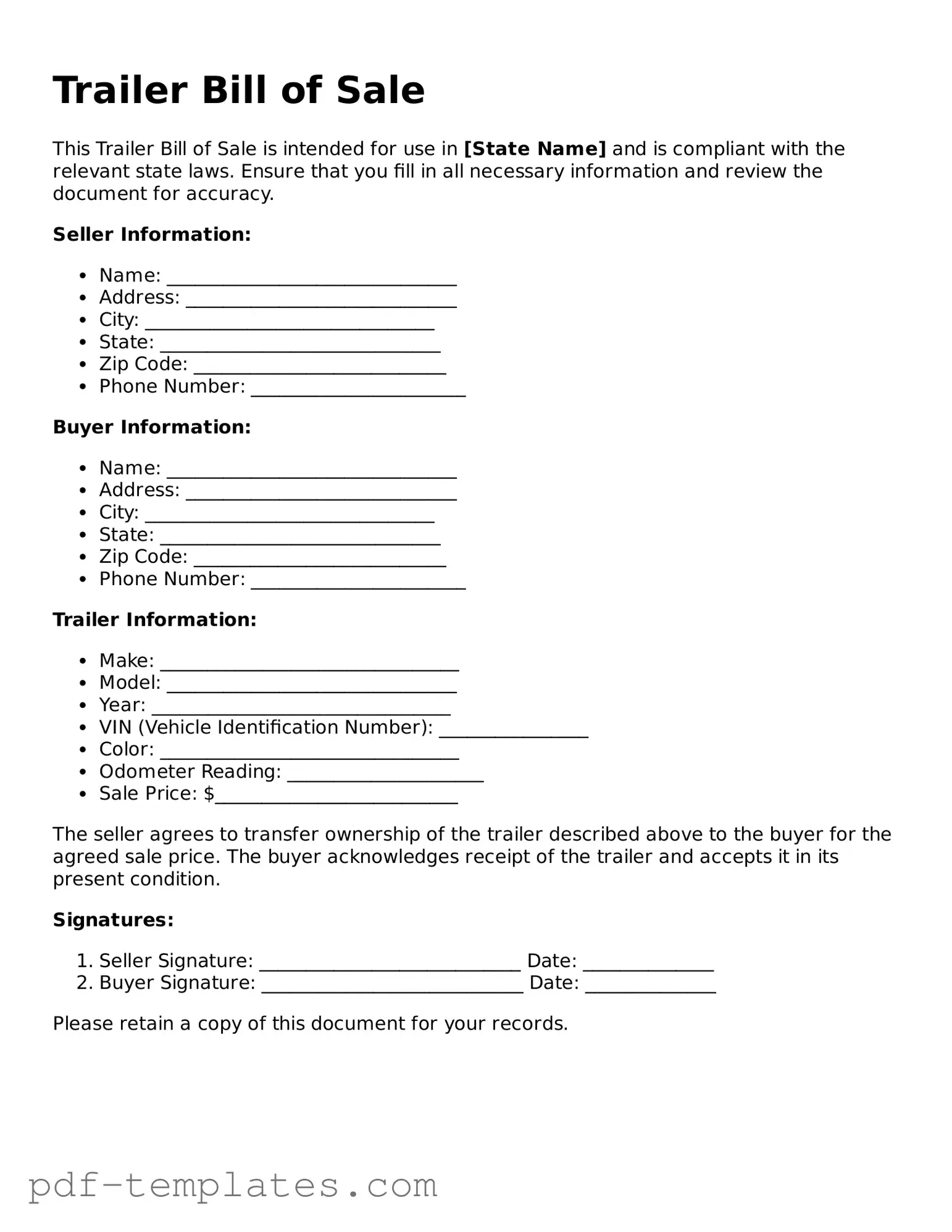The Trailer Bill of Sale form shares similarities with the Vehicle Bill of Sale. Both documents serve as proof of transfer of ownership for a vehicle, whether it be a trailer or a car. They typically include essential information such as the buyer's and seller's names, addresses, and signatures. Additionally, both forms often require details about the vehicle, including its make, model, year, and vehicle identification number (VIN). This ensures that the transaction is clear and legally binding.
Another document akin to the Trailer Bill of Sale is the Boat Bill of Sale. Like the trailer, a boat requires a bill of sale to confirm the transfer of ownership. This document outlines the specifics of the boat, such as its registration number, hull identification number, and the names of the parties involved. Both documents protect the interests of the buyer and seller, providing a clear record of the transaction.
The Motorcycle Bill of Sale is also similar in function to the Trailer Bill of Sale. It serves as a legal record when ownership of a motorcycle changes hands. This document includes information about the motorcycle, including its make, model, year, and VIN. Just like with trailers, having a Motorcycle Bill of Sale helps ensure that both parties have a clear understanding of the transaction and protects against future disputes.
In addition, the ATV Bill of Sale operates in a manner similar to the Trailer Bill of Sale. All-terrain vehicles (ATVs) require a bill of sale to validate the transfer of ownership. This document typically includes the buyer's and seller's information, details about the ATV, and any relevant terms of the sale. Both documents serve to protect the rights of the buyer and seller, providing a formal record of the transaction.
The Snowmobile Bill of Sale also shares commonalities with the Trailer Bill of Sale. When a snowmobile is sold, a bill of sale is essential for establishing ownership. This document contains similar elements, such as the parties' names, addresses, and details about the snowmobile itself. It serves as a protective measure for both the buyer and seller, ensuring that the transaction is documented and legally recognized.
Additionally, the Mobile Home Bill of Sale is another document that mirrors the Trailer Bill of Sale. When a mobile home is sold, a bill of sale is often required to formalize the transfer of ownership. This document typically includes the mobile home's specifics, such as its make, model, and serial number, along with the names and signatures of both parties. Like the trailer bill, this document provides legal protection and clarity for both the buyer and seller.
Finally, the RV Bill of Sale is similar to the Trailer Bill of Sale in that it documents the sale of a recreational vehicle. This form includes pertinent details about the RV, such as its make, model, year, and VIN. Both documents serve the same purpose: to create a clear, legal record of the ownership transfer. This ensures that both parties understand their rights and responsibilities after the sale is complete.
